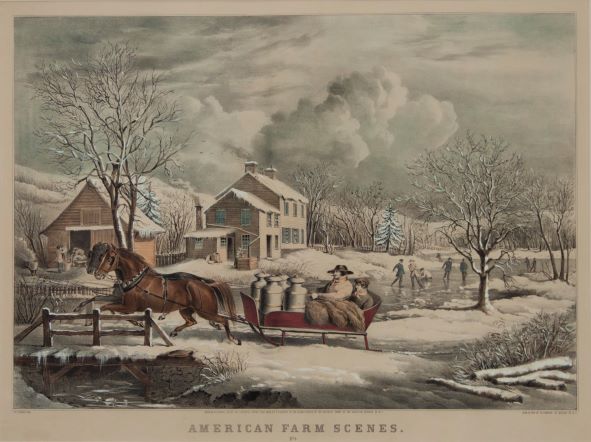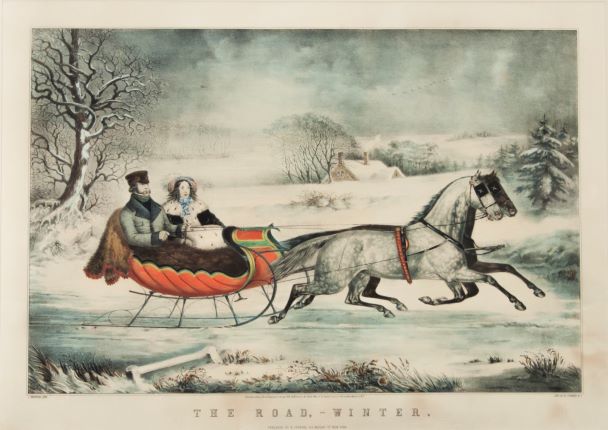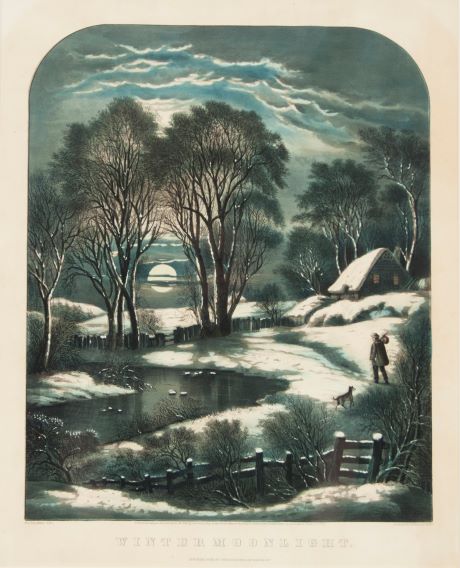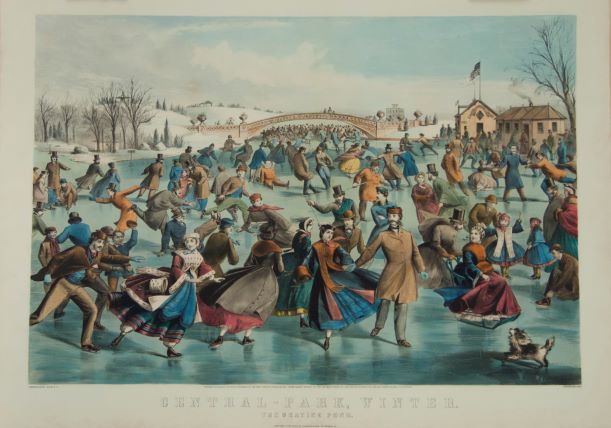America Through the Eyes of Currier & Ives
By Amanda Wastrom, Curator
Every year for Gardens Aglow, we select a few prints from Heritage’s collection of Currier & Ives to hang in the American Art & Carousel Gallery. These works are fan favorites for many visitors. What is it about these prints that still captures the imagination over one hundred and fifty years after they were made?
Based in New York City, Currier & Ives was the most successful and most prolific print publisher in the nineteenth century. In over seventy-two years of business (1835-1907), Currier & Ives sold over ten million prints of more than 7,000 different images. Their hand-colored lithograph prints were affordable for the average person, at only twenty cents for the small works and $1.50 to $3.00 for larger pieces. This was new and exciting! Art for the masses! Calling themselves “Publishers of Cheap and Popular Prints,” they were the beginnings of popular, commercial art on a large scale.
It is hard to overstate the impact their imagery has had on American tastes and attitudes, both in their time and now, looking back. Currier & Ives covered an extremely wide range of topics in their prints: images of the natural world, current news, history, and all aspects of human life including work, leisure, humor, love, and family. Their prints offered an idealized, aspirational vision of America and American culture–with a distinctly euro-centric set of views and values. Indeed, some of the prints that feature Native American or African American subjects are racist and quite troubling.
Heritage has over 150 Currier & Ives prints in its collection, including many highlights that are considered some of the firm’s best works. Many of these works were purchased in the late 1970s by the Heritage’s founder, J.K. Lilly III, after a popular exhibition featuring Currier & Ives prints from respected collector, Ladd Macmillan.
During the holiday season, we love to pull out some of the winter-themed prints to exhibit. Created in the middle of the nineteenth century, amid the social and economic upheaval of the Industrial Revolution, these particular images of simple winter pastimes and New England farms may have felt comforting to those who struggled to make sense of America’s changing cultural landscape. And perhaps that is their enduring legacy. In 2022 – over a century later – as we are still trying to navigate an ever-changing world, these images can still bring us comfort and delight.
Enjoy the images below, and if you are coming to Gardens Aglow, you will be able to see the prints hanging in the American Art & Carousel Gallery!

American Farm Scenes, No. 4, 1853, by Frances Flora Bond Palmer
This print was designed by Frances Flora Bond Palmer (1812-1876), arguably the leading woman lithographer of her time and produced hundreds of prints for Currier & Ives. At a time when women artists were seldom taken seriously, Palmer’s work became some of the most widespread and familiar in America.

The Road, Winter, 1853
This print reportedly depicts Nathaniel Currier and his second wife Laura riding in a cutter or sleigh shortly after their marriage. It was produced as a gift to Currier from his staff and proved immensely popular, then and now. Among collectors and fans, it is considered one of the best Currier & Ives prints and was used on a 10-cent postage stamp in 1974.

Winter Moonlight, 1866, by Frances Flora Bond Palmer
This is another work by Fanny Palmer. Known as “Fanny,” she was one of the few artists employed on a full-time basis by the firm and is behind a significant number of what collectors consider Currier & Ives’ best works. She not only created entire works, but also collaborated with other artists in the shop. She painted full-color models used as references for hand-coloring the prints, and even helped to develop a better lithographic crayon.

Central Park, Winter; The Skating Pond, 1862
In the years between the end of the Civil War and the turn of the twentieth century, skating became a popular winter pastime in the United States. A boom in skate manufacturing meant that skates were affordable for the average person. Cold winters–in New England and elsewhere in the northern parts of the continent–were perfect for skating.








